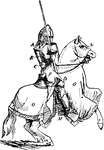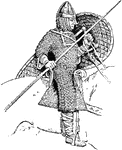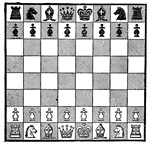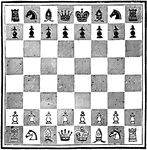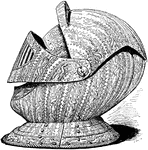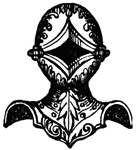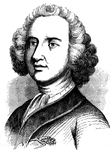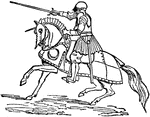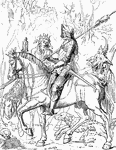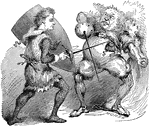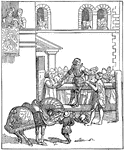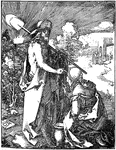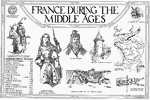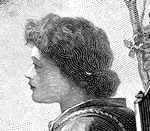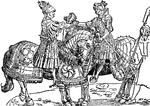
Alcantara
"One of the religious orders of Spanish knighthood, was founded as a military fraternity for the defense…

Allecret Armor
A knight wearing Allecret armor, which was typically worn by the Swiss in the 16th century.

Arbalister
"One armed with the arbalist; a crossbowman; especially, a soldier carrying the arbalist of war."-Whitney,…

Armor
"Complete suit of Plate-Armor, now in Paris, date about 1440- the epoch of greatest perfection of defensive…

Aviz
"An order of knighthood in Portugal, instituted by Sancho, the first king of Portugal, in imitation…
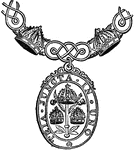
Badge, Order of Bath
"Order of the Bath, in heraldry, etc., an order of knighthood, so called because the recipients of the…

Helm of Baronet
"The Helm of Baronet and Knights is of steel, garnished with silver, and standing affronté; the…
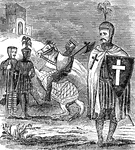
Chivalry and knight-errantry
"The chivalry of the gothic nations began in the woods of Germany. No youth was then permitted to assume…
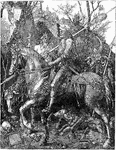
The Knight, Death and the Devil
The Knight, Death and the Devil is an engraving that was created by German artist Albrecht Dürer…

Fluted Dossière
"In armor, ornamented with ridges, corrugations, and the like, which in some cases added also to the…
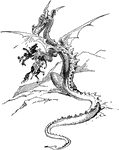
Dragon Holding Knight & Horse in Claw
An illustration of a dragon holding a knight and a horse in his claw.
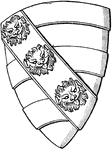
Heraldic Shield with a Lion's Face
The shield of a knight of the time of Edward II. The lion's face is a common charge in heraldry.
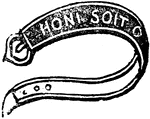
Garter
"GARTER. The insignia of the most noble order of the knights of the garter. It is formed of blue velvet…

Gauntlet
The Gauntlet is a piece of protective armor for the hand, dating back to the 12th century. The first…
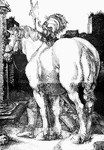
The Great White Horse
"The Great White Horse. By Albrect Dürer. From the engraving on copper." -Heath, 1901
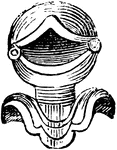
Open Helmet Direct
"The helmet without bars, with the beaver open, standing directly fronting the spectator, denotes a…

Knight and Captive
An illustration of a knight holding a prisoner with one hand and a sword with the other.
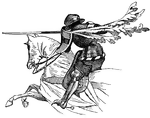
A Knight on Horseback, Wearing a Woman's Sleeve as a Favor
Illustration of a knight, riding a horse at full gallop, carrying a javelin and wearing full armor.…

Knight Riding Horse & Holding a Lance
An illustration of a knight riding a horse and holding a lance.
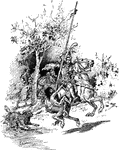
Knight Riding Horse with a Child Holding onto Knight
An illustration of a knight riding a horse and holding a javelin with a child holding onto the horse…

Arming a Knight
"At the age of twenty-one the squire became a knight, being then introduced to the order of knighthood…
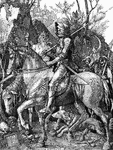
The Knight, Death, and the Devil
"The Knight, Death, and the Devil. By Albrecht Dürer. From the engraving on copper." -Heath, 1901

Two Knights Jousting with Lances
An illustration of two knights jousting with lances, shields, and armor.

Pennons
"PENNONS. Small flags borne at the end of a lance of an esquire or gentleman bearing his paternal arms.…
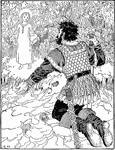
The Selfish Giant
From the book of stories by Oscar Wilde, The Selfish Giant is about a giant who closes his garden up…
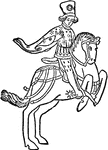
Squire
In feudal or medieval times a squire was a man-at-arms in the service of a knight, often as his apprentice.…
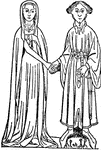
Squire and Wife
An illustration of a squire and his wife. In feudal or medieval times a squire was a man-at-arms in…

Squire of a Knight of the Bath
An illustration of squire of a Knight of the Bath at the crowing of Charles II.
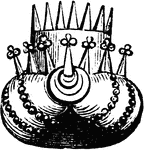
Turband
"TURBAND. In coats of arms, where the knight was a Crusader, this figure often appears. It was the form…

Sir William Wallace
Sir William Wallace was a Scottish knight, landowner, and patriot who is know for leading a resistance…

Weston Coat of Arms
"The male figure is that of Sir John de Weston, of Weston-Lizars, in Staffordshire, and Isabel his wife,…

